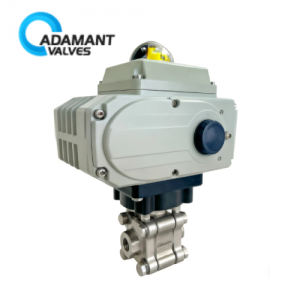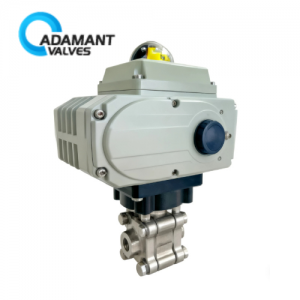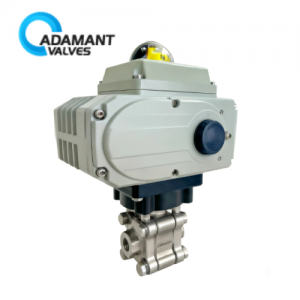Application of Pneumatic Control Valves in the Pharmaceutical Industry
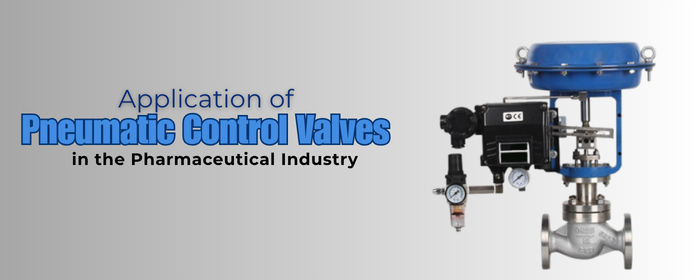
The pharmaceutical industry is a crucial sector directly impacting human health, and it imposes extremely high requirements for precision, stability, and safety in production processes. Fluid control plays an indispensable role in pharmaceutical manufacturing, from raw material handling to drug synthesis, purification, and final packaging. As an important fluid control device, pneumatic control valves (pneumatic regulating valves) have gained widespread application in the pharmaceutical industry.
Basic Structure of Pneumatic Control Valves
Generally, a pneumatic control valve primarily consists of two main parts: the actuator and the regulating valve. The actuator includes components such as cylinders, pistons, and springs. It is responsible for converting pneumatic signals into mechanical movement. The regulating valve comprises the valve body, plug, seat, stem, and seals. It comes into direct contact with the fluid and enables flow control. And its design and material selection are crucial.
- The valve body is typically made of corrosion-resistant materials such as 316L stainless steel. Furthermore, its inner walls are often high-precision polished to ensure no dead legs, easy cleaning, and prevention of microbial growth.
- Depending on the application, the plug and seat come in various types, such as diaphragm valves, ball valves, butterfly valves, and slide valves. Diaphragm valves are the most widely used in sterile processes due to their leak-tightness, absence of dead legs, and ease of cleaning.
- The positioner is a key accessory for control valves and is typically used in conjunction with pneumatic control valves. It receives the output signal from the control system and converts this signal into a corresponding action.
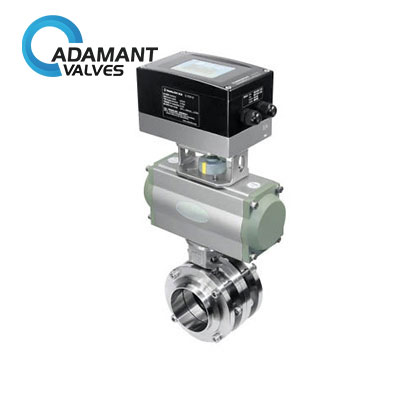
Pneumatic Butterfly Valve With Positioner
Working Principle of Pneumatic Control Valves
Pneumatic control valves use gas pressure as their power source to regulate fluid flow, pressure, or level.
- When the control system sends a signal, it is received by the valve positioner, which converts the electrical or pneumatic input into a pneumatic pressure signal.
- This pressure signal acts on the actuator’s diaphragm or piston, moving the valve stem and plug. The resulting change in the position of the plug relative to the seat adjusts the flow passage area, thereby controlling the fluid flow rate.
- By receiving control system signals, such as a 4–20 mA current signal, the pneumatic control valve precisely adjusts its opening based on the setpoint, helping maintain stable process parameters during production.
This working principle allows pneumatic control valves to accurately control fluid flow and pressure.
Application Scenarios of Pneumatic Control Valves in Pharmaceutical Processes
- Reaction Process Control
In pharmaceutical synthesis reactions, adding certain active ingredients requires extremely precise control. Pneumatic control valves can adjust the material flow in real time. They use feedback from the reaction progress and process parameters to ensure stable reaction yield and consistent product quality.
- Temperature Control Loops
During drug purification and crystallization processes, precise temperature control has a decisive impact on product purity and crystal morphology. Pneumatic control valves, used in conjunction with equipment like heat exchangers, can quickly respond to signals from temperature sensors, thereby precisely regulating the flow rate of the heat exchange medium to maintain the temperature stably within the set range, thus improving product quality and consistency.
- Pressure Regulation Systems
In certain high-pressure or vacuum processes within pharmaceuticals, such as high-pressure sterilization and vacuum drying, pneumatic control valves are used to maintain stable pressure within the system. Based on feedback signals from pressure sensors, they can automatically regulate the flow of gas or steam, ensuring the process occurs under specified pressure conditions.
- Flow Ratio Control
In pharmaceutical formulation processes, it is often necessary to mix multiple different liquids or gases in precise proportions. Pneumatic control valves can be installed on the supply lines of each material. According to the ratio coefficients set by the control system, the pneumatic control valves precisely regulate the flow of each material, achieving accurate flow ratio control.
Advantages of Pneumatic Control Valves in the Pharmaceutical Industry
- High Precision Control: Pneumatic control valves provide precise control over flow, pressure, and level.
- Rapid Response: Pneumatic control valves can react to control system signals within a short time, promptly adjusting the valve opening.
- Reliability and Durability: Pneumatic control valves have a relatively simple structure and, validated by long-term industrial practice, offer high reliability and durability. Their fewer moving parts reduce the probability of failure.
- Excellent Sealing Performance: The seal design between the valve body, plug, and seat can effectively prevent fluid leakage, ensuring a clean production environment and the safety of drug quality.
- Compatibility with Various Media: Pneumatic control valves can be fitted with suitable valve body materials, seal materials, and plug structures based on the characteristics of different media.
Conclusion
Pneumatic control valves are widely used in various critical stages of pharmaceutical production. They offer advantages such as high-precision control, rapid response, strong reliability, and excellent sealing performance, providing pharmaceutical companies with stable and precise fluid control solutions.


